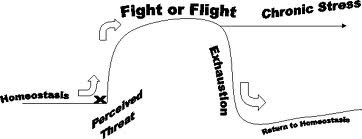
05/09/2014
Did you know…
Did you know that continual exposure to trauma, particularly during the developmental stages, can actually re-structure your brain?
There are two types of trauma, the single incident traumas (ie: car accidents, natural disasters, witness of a shooting, loss of a loved one, sexual assault etc) and there is continual and on-going trauma (ie: sexual abuse, domestic violence, emotional and verbal abuse, prisoners of war, long and/or life threatening illness etc).
Single Incident Trauma
As aforementioned, single incident traumas include traumatic events, both major and minor , that occur only one time. These traumatic events can have a great impact on how individuals approach their everyday life possibly being inhibited by flashbacks, unrealistic fears, lack of trust etc. This is normal, your brain is doing exactly what it should do in these cases – recalling the incident and trying to avoid the re-occurrence of it.
While single incident traumas can be major life altering experiences; given proper interventions, time to grieve and the room to process the incident effects should dissipate over time in most cases. If you have experienced a single incident trauma please seek out counseling – this could expedite the healing process.
Continual On-Going Trauma
This is the type of trauma that I tend to work with most often. When a person experiences on-going trauma over a long period of time it can physically re-structure how the brain operates. This is especially true in individuals who had on-going trauma as children when their brain was first developing. When not treated this restructuring will continue to be reinforced well into adulthood.
The normal brain takes in information from all senses and has it pass through the logical part (Prefrontal Cortex)of the brain which helps it decide if their is a threat. The information is then sent to the emotional part of the brain (Amygdala) to help determine a response. If it was a single incident trauma your brain will respond with appropriate feelings of fear, sadness, anxiety etc. which helps the individual decide how to best handle the situation.
However, if the individual’s brain was trained over long periods of time to be on high alert at all times, then the brain will have a tendency to skip the logical part and go straight to the emotional part and stay there. This process is helpful when a person is required to react quickly to a danger ie: being chased by a saber tooth tiger, there is no thinking – just RUN! This part of the brain was developed during a time when saber-tooth tiger encounters were relatively common – now….not so much.
This process is not so helpful when the sound of a door closing sets the body into panic mode requiring your body to constantly pump cortisol in the system causing the individual to always be on edge- always “waiting for the ball to drop”. Hyper vigilance is a possible by-product of a “trauma brain”.
The trauma brain also makes it incredibly difficult for an individual to regulate their own emotions. This lack of self-regulation is most evident in children, those children are the ones whose systems are unable to tolerate small disappointments such as being asked to do a chore or not getting a requested snack. These little disappointments cause an immediate tailspin of emotion similar to that of a toddler, which may indicate that as the age of development in which the trauma began. (Click HERE to hear more about how trauma effects children)
Numbness
Think, for a moment, of the brain as a muscle and once that muscle is strengthened enough it becomes difficult to reverse. Therefore, the brain that has been built up with the automatic trauma response may have done so often enough that the body simply “turns off” or “goes numb” in response. This is the most visible sign of prolonged childhood trauma in adults. This numbness or dissociation is a defense mechanism that is developed by the brain to help protect the individual from further trauma – the brain checks out.
The body dissociates because the reality or truth is too difficult for the individual to handle. However, in a case when the individual is in a constant state of hyper-arousal they shut down and become distant, numb, ambivalent to situations that would cause more reaction or feeling of others. Dissociation can also account for the reason why an individual may have been severely traumatized in childhood but not remember it until adulthood – this is called suppression. Prior to that moment it may not have been safe enough to recall it.
Other Symptoms
www.Helpguide.org sites emotional, psychological and physical symptoms of trauma:
Emotional and psychological symptoms of trauma:
|
|
Physical symptoms of trauma:
|
|
Neurobiology of the Brain
Dr. David Lisak explains the process of reaction the brain goes through after trauma and the traumatized individual’s outward symptomology in this well put together video.
Counseling
Returning once again to the brain as a muscle analogy, let’s talk a little about how to reverse that process. In an individual who is struggling with the brain re-structuring of trauma, the information that is taken in through your senses automatically bypasses the logic and goes straight to the amygdala or the “fight, flight, or freeze” response. Counselors trained in trauma sensitive techniques can help you to “re-wire” the brain, so to speak. Counseling can help strengthen the muscle that sends messages through the frontal lobes or logical parts of the brain; increasing the individual’s ability calm down after a state of hyper-arousal and increase their emotional tolerance levels.
If you suspect you or someone you know has been effected by trauma I strongly suggest you seek out help from your doctor, a counselor or psychiatrist.





Do you know what happens to someone who experiences trauma who doesn’t make/release cortisol? But instead takes a regular dose of it as a replacement.